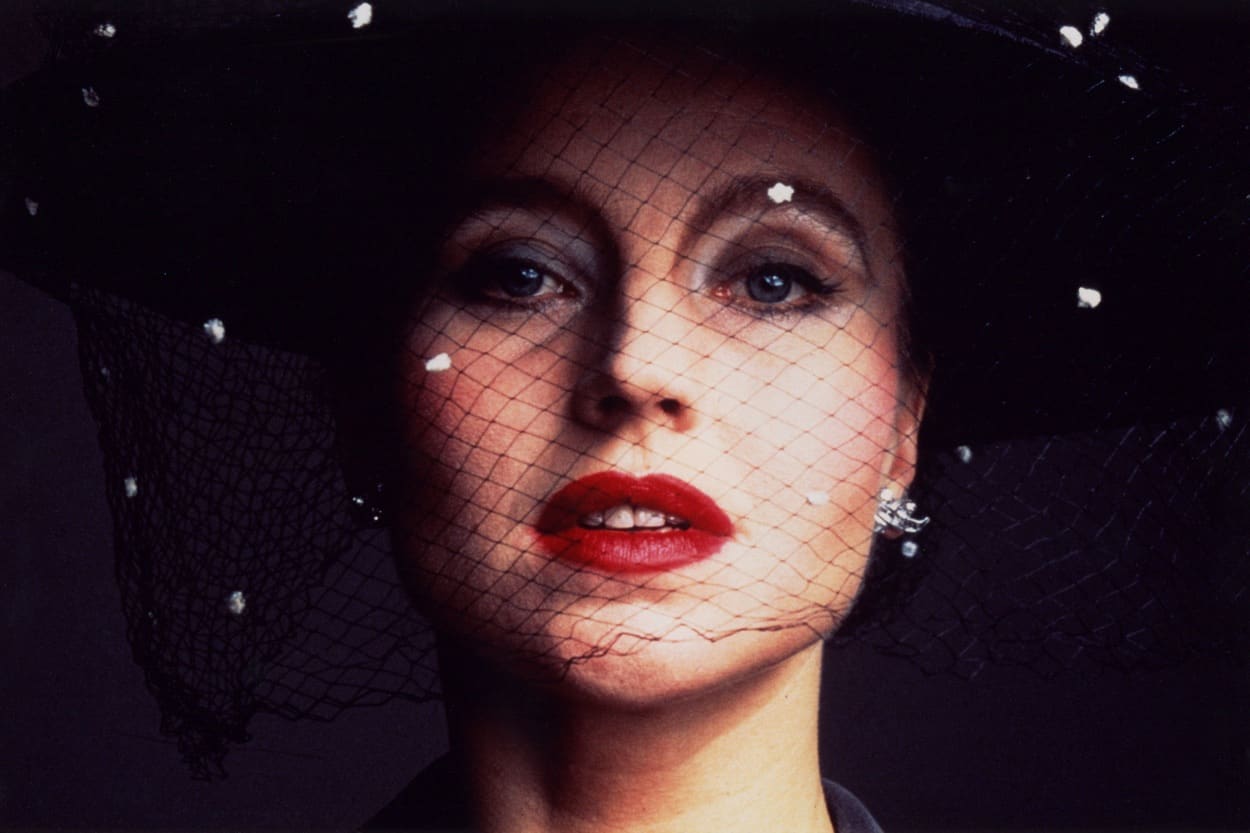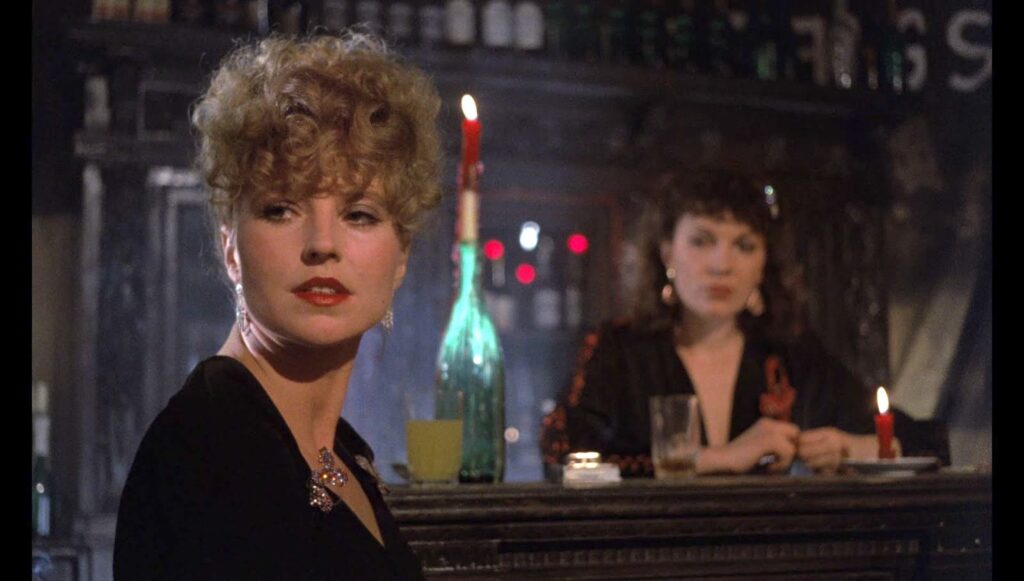The first of Rainer Werner Fassbinder’s “BRD Trilogy”, The Marriage of Maria Braun (aka Die Ehe der Maria Braun) is a canonical part of the New German Cinema era of the 1970s and in its key figure, Maria (Hanna Schygulla), gives us post-War Germany’s spectacular economic rebirth (die Wirtschaftswunder) distilled down into a single person.
Fassbinder starts us off in the dog days of the Second World War. The first image on the screen is a portrait of Hitler, seconds later dislodged by the shock wave from a falling bomb to reveal a man and woman in the process of getting married while the world literally explodes around them. Maria and Hermann.
Cut to a couple of years later. The war is over. Life is tough. Fuel and food are scarce. Black marketeering is rife. Fassbinder brilliantly conjures the mood of a nation putting itself together. In the streets civilian volunteers are clearing rubble and stacking bricks – to rebuild. In their homes Germans eke out an existence, bartering valuables for firewood. As Maria and her mother discuss what to do next, in the background a radio announcer steadily reads out an endless list of the names of the missing.
Daily, Maria walks the streets with the name of her missing soldier husband on a placard around her neck. Her life is on hold until he returns, she says, though everyone tries to convince her that he’s probably not coming back.
Borrowing the plot from the 1933 movie Baby Face – in which Barbara Stanwyck played a poor girl working her way up the greasy pole using everything in her armoury – Fassbinder gives Maria a moment of awakening then sends her off on a journey to the top, taking advantage of all the men she meets on the way to tell a story of girl power and economic renaissance.
Throughout, Maria retains her sense of self-worth by insisting that she is married to her absent husband, who is missing-presumed-dead for the first chunk of the film, then dramatically returns only to wind up almost instantly in jail on a murder charge, only to get out in time for Fassbinder’s sting-in-the-tail finale.
“Dead” or alive, Hermann barely features, except as a deep metaphor for Germany’s attachment to another missing-presumed-dead character in its recent history. Though to be honest Fassbinder seems more in awe of Maria than disapproving – a girl’s got to do what a girl’s got to do and all that.
That’s how Schygulla plays her too. Maria is clearly a schemer and yet Schygulla makes a likeable one. She may be on the make but Maria is also fun and smart and not without her moments of introspection. And in her insistence on not being judged by the standards of men, she’s also very modern, both for the 1970s and for now.
That’s the other really noticeable thing about this film, 45 years old as it write and yet very fresh in its feel. That’s partly down to the way Fassbinder worked, at lightning speed (he shot this by day while writing his behemoth, Berlin Alexanderplatz, by night, inhaling vast amounts of cocaine to keep his productivity up – no wonder he died young).
The cinematographer Michael Ballhaus must also take a good deal of the credit for that freshness. He shoots in an economical manner, doing with precise camera positioning what other directors would achieve in the edit suite. Shots are carefully choreographed, then choreographed a touch more so as to make everything look as if it wasn’t pre-planned. It’s really impressive and you can see why he became Scorsese’s go-to man.
The BRD Trilogy examined modern Germany – the Bundesrepublik Deutschland (hence the name) – and at the time was shocking because of its willingness, eagerness even, to suggest that present-day Germans weren’t being half honest enough with themselves about the Hitler years. The criticism seems a bit muted from this distance, but that’s because the debate has moved on – Fassbinder moved it on.
Lola would follow two years later, in 1981, and Veronika Voss would bring the trilogy to a brilliant finish in 1982. With these three films Fassbinder finally became famous outside the tight world of theatre and German cinema. One year after Voss he was dead, aged 37. The Marriage of Maria Braun was his greatest success.
The BRD Trilogy (Lola, The Marriage of Maria Braun, Veronika Voss) – Watch it/buy it at Amazon
I am an Amazon affiliate
© Steve Morrissey 2024


